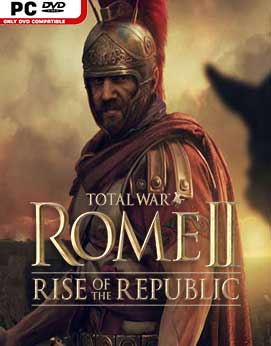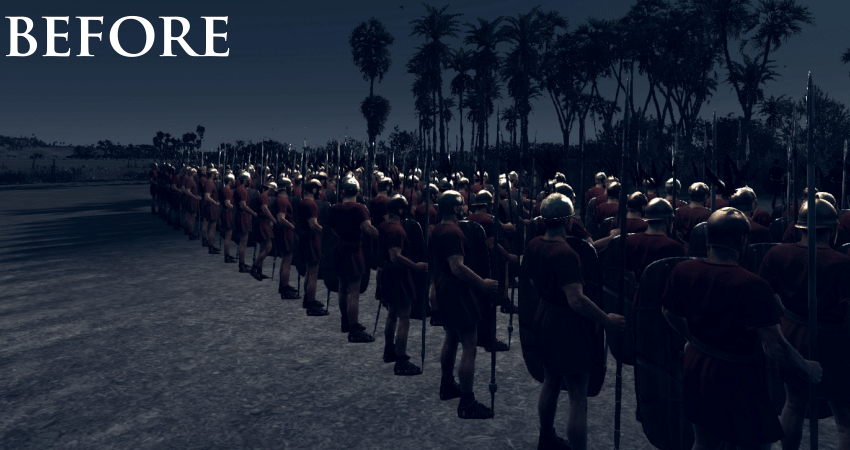
While Creative Assembly's last DLC for Total War: Rome II visited the Crisis of the Third Century, their latest DLC, Rise of the Republic, has gone in the exact opposite direction.
And while the main draw here is to take control of the Romans when they're still just a minor player in a region of central Italy still dominated by the Etruscans, there's nothing stopping the player from giving history one heck of a rewrite.
But when looking at Rise of the Republic for the first time, it's easy to get overwhelmed, so here's a quick guide to picking a faction and getting to grips with the new mechanics that Rise of the Republic introduces.
Choosing A Faction
As with Rome II's base game, this DLC helpfully lets you know which factions are going to be relatively easy to handle and which ones are going to be early-game nightmares. So here's a quick cheat sheet:
2 years 1337x.to Total War Rome II Rise of the Republic-CODEX Games PC Game 1 day thepiratebay.org Total War Rome II Rise of the Republic-CODEX PC 8 days pirateiro.com Total War Rome II Rise of the Republic-CODEX games 1 day monova.org codex-total.war.rome.ii.rise.of.the.republic Other 12 hours ibit.to codex-total.war.rome.ii.rise.of.the. In Total War: Rome II Rise of the Republic, picking Rome means picking the faction with the worst starting position in the game. On the other hand, if you can survive into the midgame, you'll get an ever-expanding series of advantages over your opponents. Total War: ROME II – Rise of the Republic is a thrilling new campaign pack charting the events surrounding Rome in the 4th century BC. The campaign unfolds across a detailed map of Italy including Sicily, Sardinia, Corsica and Carthage, and depicts the tumultuous events which ultimately set the stage for the Second Founding of Rome.
- Easy factions
- Insubres
- Tarchuna
- Veneti
- Medium factions
- Syracuse
- Senones
- Samnites
- Iolei
- Hard factions
- Rome
- Taras
The Insubres
The Insubres start safely nestled up against the top of the map, meaning you'll only be fighting in one direction: southward into Italy. If you like systemic conquest and simplified strategic goals, this is the faction to pick.
The Veneti
Total War Rome Ii Rise Of The Republic-codex
Likewise, the Veneti have the northeastern corner of the map at their back, giving a similar advantage to a player that only has to look in one direction. If you're fairly adept at naval conquest, you can strike anywhere at any time with this faction, either expanding your empire or making big money raiding and sacking.
The Tarchuna
Total War Rome Ii Rise Of The Republic-codex
The Tarchuna start with control of a big chunk of territory and a southern flank ripe for conquest, as the Romans do battle with Veii and the Volsci. This is the faction for the more settled, “civilized”, methodical Total War player who likes limited wars and consolidating conquests.
Syracus
Syracuse has a strong starting position and is great for a player who combines naval prowess with a good ability to build and consolidate. However, this faction also has the powerful (and non-playable) Carthaginians to deal with. You'll need to fight quite a bit in the early-game, but you can use this faction for a methodical mid-game strategy very easily.

Senones
The Senones historically sacked Rome in 386 B.C., but getting to Rome isn't as easy as it looks. You'll have to march through well-defended territory in the Appenines to get there. This is the faction for a militaristic player who has a very strong grasp on combat and serves as more of a challenge than their Gallic brethren the Insubres.
Samnites
The Samnites have the ability to magic an army out of nowhere using the game's special-abilities system, but they also have aggressive neighbors who won't hesitate to declare war and swarm in. This faction is great for players who like to fight early-game defensive battles before exploiting a weakness to break out and mop up an enemy after dealing their attack force a decisive defeat.
Iolei
The Iolei are in a league of their own, with troops that can deploy and hide anywhere on the battlefield, something they'll need when chasing Carthage off their island of Sardinia. This is a good faction to pick for players who like sea trade and diplomacy in equal measure.
Rome and Taras
Rome and Taras have the same problem: a poor starting position relative to their enemies. They also have a tendency to end up in two- or three-front wars. If you like mad dashes to put out fires in the early-game as your neighbors try to swarm you, these are your factions.
What's Different from the Total War II Basegame?
The most important thing to remember here with the Rise of the Republic DLC is this: it's still Rome II. Which means that the standard strategy of “deal with early-game threat, break out, then conquer toward your objectives” still applies here. Forming a fundamental strategy hasn't changed a bit.
Likewise, the new “ancestral” system gives more character to the game's politics. The “other” factions are the same as they've ever been, but now your dynasty is more like the family tree in previous Total War games, which gives a much stronger sense of the relationships between characters in the game.
By the same token, instead of time advancing by years, time now advances by seasons, while character progression continues at the same rate.
What this means in practice is that high-level characters are much more viable. There will be a lot of Level-10 spies, champions, generals, and the like, and moving characters up the game's cursus honorum to keep their political factions from revolting is a much more important strategic consideration than it's ever been in the basegame.
Imperium also racks up very quickly; this is both a good thing (benefits to running the empire) and a bad thing (civil wars happen early and often if you don't take proactive steps to stop them.)
---
The keys to getting the most out of the Rise of the Republic DLC:
- Pick a faction that best suits your playstyle and skill level
- Survive and consolidate in the early-game
- Enjoy the ride once you get the steamroller going
Basically, this DLC is the same Rome II you know and love, but with a twist. Stay tuned for more coverage on Total War: Rome II's Rise of the Republic update on GameSkinny.
